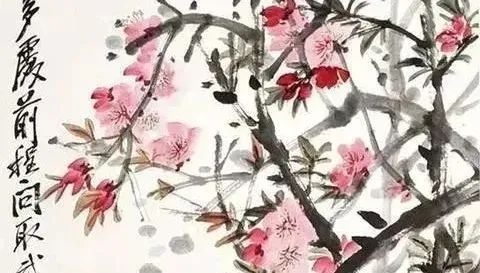
1. Wu Xin Fan Re (Five Hearts Heat): Refers to the sensation of heat in the palms and soles, accompanied by a feeling of heat in the chest.
2. Liu Zhu (Flowing Abscess): A type of purulent disease characterized by the erratic movement of toxic pathogens, occurring in deeper tissues. It often manifests as swelling or lumps in the muscles, which can become purulent over time, especially in individuals with weak Qi and blood.
3. Fei Jin (Lung Metal): In traditional Chinese medicine’s theory of the five elements, the lung is associated with the metal element.
4. Zhong Feng (Stroke): Refers to cerebrovascular accidents. The condition may arise from deficiency of Yin essence or excessive anger damaging the liver, leading to hyperactivity of liver Yang and internal wind; “similar to stroke” refers to symptoms resembling those of a stroke.
5. Tan Huo (Phlegm Fire): Refers to the accumulation of formless fire and tangible phlegm in the lungs.
6. Jun Zhu Zhi Guan (Ruler’s Official): Refers to the heart, which holds a primary position among the organs.
7. Xu Chuan (Deficient Asthma): Refers to asthma due to deficiency of the lungs and kidneys, particularly with the kidneys failing to receive Qi.
8. Jue (Syncope): Refers to sudden fainting.
9. Rong, Yi (Nourishing Qi, Defensive Qi): Refers to the two types of Qi in the body.
10. Gan Wei (Liver Atrophy): Also known as tendon atrophy.
11. Qi Ni (Rebellious Qi): Refers to Qi rising abnormally.
12. San Jiao (Triple Burner): Divided into upper, middle, and lower burners. The upper burner generally refers to the area above the diaphragm, including the heart and lungs; the middle burner refers to the area below the diaphragm, including the spleen and stomach; the lower burner refers to the area below the navel, including the kidneys, bladder, small intestine, and large intestine, and physiologically includes the liver, thus often referring to both liver and kidney.
13. Zhen Huo (True Fire): Refers to kidney Yang.
14. Xue Wei Ying, Qi Wei Yi: Refers to nourishing Qi and defensive Qi.
15. Long Lei Zhi Huo (Dragon Thunder Fire): Refers to kidney fire and liver fire, as well as the fire of the heart and kidneys. Dragon fire refers to kidney fire; thunder fire refers to heart fire.
16. Xiang Huo (Ministerial Fire): In contrast to “Jun Huo” (Ruler Fire), generally refers to the ministerial fire of the liver and kidneys.
17. Shen (Spirit): Refers to the spirit, with traditional Chinese medicine stating that the heart houses the spirit.
18. Gan Qi (Liver Qi): Refers to the essence of the liver.
19. Gan Xue (Liver Blood): Refers to the blood stored in the liver. Liver blood and liver Yin cannot be separated.
20. Shen Huo (Kidney Fire): The kidneys are Yin organs, containing both water and fire (true Yin and true Yang), which must maintain a relative balance.
21. Xin Huo (Heart Fire): Broadly refers to the functional activities of the heart, specifically the heart’s role in promoting blood circulation.
22. Shen Qi (Kidney Qi): Refers to the Qi generated from kidney essence, indicating the functional activities of the kidneys, such as growth, development, and sexual function.
23. Shen Shui (Kidney Water): Refers to the Yin fluid of the kidneys, also known as kidney Yin.
24. Xian Tian (Pre-natal): Refers to the source of life and development in the human body, in contrast to post-natal.
25. Hou Tian (Post-natal): Refers to the spleen and stomach. The substances and energy required for the body’s growth, development, and life activities after birth depend on the Qi of the spleen and stomach to absorb the essence of food and water for nourishment.
26. Gan Wei Shen Zhi Zi (Liver is the Child of the Kidney): According to the theory of the five elements, the liver belongs to wood, and the kidneys belong to water; water nourishes wood, hence the liver is the child of the kidneys, while the kidneys are the mother of the liver.
27. Gu Zheng (Bone Steaming): “Bone” indicates depth, and “steaming” refers to the emission of heat, describing the heat of Yin deficiency that emerges from within, hence termed bone steaming.
28. Xin Shen Bu Jiao (Heart and Kidney Not Intersecting): The heart is in the upper burner and belongs to fire; the kidneys are in the lower burner and belong to water. The Yang of the heart descending to the kidneys can nourish kidney Yang; the Yin of the kidneys ascending to the heart can nourish heart Yin. Under normal circumstances, heart fire and kidney water rise and fall in coordination, maintaining dynamic balance. If kidney Yin is insufficient or heart fire is disturbed, the coordination is lost, termed heart and kidney not intersecting. The main symptoms include irritability, insomnia, vivid dreams, palpitations, and nocturnal emissions, often seen in patients with neurosis and chronic weakness.
29. Ren Mai (Conception Vessel): Begins in the lower abdomen (in the womb) and ascends along the spine. It also emerges from the perineum, rising to the front of the body along the midline, passing through the navel, and ascending to the chest and neck, serving as the general pathway for Yin meridians.
30. Jun (Ruler): Refers to the main herb in a prescription.
31. Zhen Shui (True Water): Refers to kidney Yin, in contrast to kidney Yang, which refers to the Yin fluid of the kidneys (including the essence stored in the kidneys), serving as the basis for kidney Yang’s functional activities.
32. Gan Mu, Pi Tu (Liver Wood, Spleen Earth): In the theory of the five elements, the liver is classified as wood because it governs the smooth flow of Qi; the spleen is classified as earth because it governs digestion and transports the essence of food throughout the body, thus linking to the transformation of earth.
33. Cou Li (Skin Texture): Refers to the texture of the skin, muscles, and organs, where Qi and blood circulate. Cou Li connects to the skin, serving as the pathway for the distribution of defensive Qi and the excretion of sweat.
34. Wang Lai Han Re (Alternating Cold and Heat): Refers to the alternating occurrence of chills and fever, either at regular or irregular intervals.
35. Jun Xiang Er Huo (Ruler and Ministerial Fire): Refers to ruler fire and ministerial fire. Ruler fire refers to heart fire, as the heart is known as the “Ruler’s Official.” Ministerial fire, in contrast to ruler fire, is believed to reside in the Mingmen (Gate of Life), liver, gallbladder, and triple burner, and both fires work together to nourish the organs and promote functional activities.
36. Chong Mai (Penetrating Vessel): One of the eight extraordinary vessels. It begins in the lower abdomen (in the womb) and ascends along the spine. It also runs upward from both sides of the perineum, flanking the navel, and stops at the chest.
37. E Xue (Evil Blood): Refers to bad blood.
38. Bai Xue (Stagnant Blood): A type of blood stasis, referring to blood that has leaked outside the meridians and accumulated in the interstitial tissues.
39. Dai Mai (Girdle Vessel): One of the eight extraordinary vessels. It begins in the lateral costal region and encircles the waist.
40. Pi Qi (Spleen Qi): Refers to the functional activity of the spleen.
41. Ming Men (Gate of Life): Refers to the key to life, the essence of life. It is the source of life and the fundamental element that sustains life. It is often associated with the two kidneys.
42. Chao Re (Tidal Heat): Refers to a fever that rises and falls like the tide, typically occurring at a specific time each day (often in the afternoon).
43. Yong (Abscess): A disease characterized by superficial and large sores caused by the obstruction of Qi and blood by toxic pathogens.
44. Shou Han (Hand Sweating): Refers to excessive sweating in the palms, often caused by damp-heat in the spleen and stomach.
45. Qian Yin (Front Yin): Also known as “Lower Yin,” refers to the external genitalia and urethra in both males and females.
46. Hou Yin (Back Yin): Refers to the anal area.
47. Si Xue (Dead Blood): Refers to stagnant blood.
48. Shi Tan (Damp Phlegm): A type of phlegm syndrome, often caused by the spleen’s inability to transport dampness, leading to the accumulation of phlegm. Symptoms include excessive thin white phlegm or yellow phlegm that is easy to expel.
49. Mu (Numbness): Refers to numbness.
50. Shen Ming (Spirit Brightness): Refers to the concept of “Shen.” “Shen” governs consciousness, perception, and movement, and has a material basis generated from pre-natal essence and post-natal nourishment, which sustains its function. In the human body, it occupies a primary position. Ancients linked certain functions of the brain and central nervous system to the heart, hence the saying “the heart houses the spirit.”
… (Content continues with similar translations for the remaining terms)

